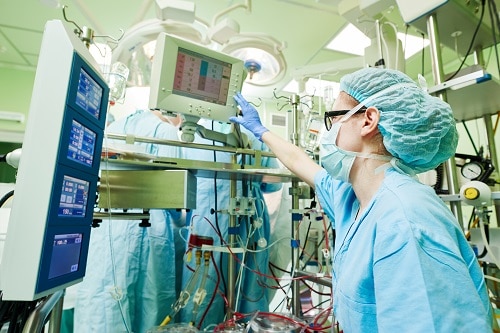Peristaltic pumps have a design that is easy to understand. They mimic a biological process called peristalsis, which is how we and most living beings process food. Because the fluid only touches the inside of the tubes, they are perfect for applications in which sanitation is mandatory and no biological or chemical cross-contamination can be allowed.
Peristaltic pumps are classified as positive displacement pumps. They consist of a tube surrounded by a casing. On the inside of the circle, there is a rotor with “shoes” or rollers that pinch the tube. Where the roller touches the tube, it is closed or “occluded.” This makes the fluid move forward in the tube. As the tube passes, the tube enlarges again, creating some suction and allowing fluid to flow into the pump.
Peristalsis begins when food is swallowed. When you swallow anything, the top of your throat and esophagus closes. It keeps closing further down the upper GI tract, pushing the food or beverage into the stomach and eventually all the way out the lower GI tract as waste.
Perhaps the best way to visualise this natural motion is to visualise a snake swallowing a mouse. You can see how the snake’s GI tract pushes the mouse through its body as it slowly digests everything.

Applications of Peristaltic Pumps
Peristaltic pumps can run on a continuous basis or they can also be used for precise applications. They are most often used to move fluids that are sterile or aggressive chemicals. They can also pump IV fluids or slurries with a high degree of fluid content. They are also used for heart/lung machines during surgery.
They can also be fitted as tube pumps or hose pumps and are used in a variety of industrial applications.
Advantages of Peristaltic Pumps
The main advantage of peristaltic pumps is that the fluid only touches the hose portion of the pump. This makes them easy to clean and maintain. It also makes them extremely reliable in sterile and chemical applications.
To learn more, call Pump Solutions Australasia today: 08 9408 1544.
